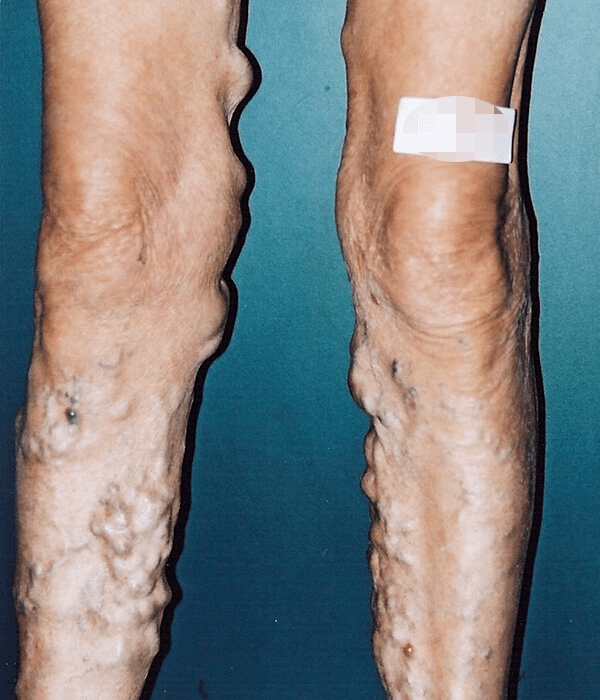Endovenous Laser Ablation
Australian Vein Clinics
Vein Treatments
Endovenous laser ablation is a minimally invasive treatment that utilises laser heat energy to effectively remove extensive and large Varicose Veins.
What is Endovenous Laser Ablation?
EVLA is considered to be a safe and effective treatment for varicose veins and venous leg ulcers, and it has a high success rate. Following the procedure, patients are advised to wear compression stockings and to avoid strenuous activity for a few days. In most cases, patients can return to their normal activities within a few days to a week.
What Endovenous Laser Ablation Treats
Vein Treatment Melbourne
How It Works
Endovenous Laser Ablation utilises laser light energy to effectively treat extensive and large varicose veins. Under ultrasound guidance, a fibre-optic laser is introduced to the targeted vein through a catheter. Heat is applied as the laser fibre is pulled out of the vein, resulting in the vein walls collapsing and the vein sealing off. Any blood flow through these superficial veins is automatically rerouted into healthier veins, and the closed-off vein naturally dissolves into the surrounding tissue over time. The vein is then effectively removed, and the results are permanent for the treated vein. New varicose veins can form over time.

Locating the vein
The first step is inserting a small catheter into the vein which is connected to a laser fibre. We then use ultrasound imaging to guide the laser fibre to the correct location within the vein.

Delivering energy to the vein walls
We activate the laser fibre, which emits wavelengths of light that are absorbed by the blood in the vein. The heat causes the vein walls to collapse and seal shut.

Removing the catheter and laser fibre
The third and final step is to remove the catheter and laser fibre from the vein. Once these are removed, a dressing will be applied over the treated area.
The Cost of Endovenous Laser Ablation
The cost of EVLA varies depending on the severity of the condition and the number of veins requiring treatment, this is indicated by the ultrasound we perform on the day. EVLA is generally more affordable than traditional surgery. Endovenous laser ablation is an effective treatment for varicose veins and can help improve your overall quality of life.
Endovenous Laser Ablation Cost Factors
- The severity of your veins
- The number of veins needing treatment
- The size of your varicose vein
Starting From: $$
What To Expect
On the day, you will be taken in with your vein surgeon and sonographer. You will begin with a duplex ultrasound to clearly map the locations of your veins. The treatment will then begin under ultrasound guidance to ensure accuracy and closely monitor how well the veins react while being treated. Local anaesthetic will be injected to ensure you are comfortable throughout the treatment.
The Endovenous laser ablation treatment will generally take 30-60 minutes and does not require any general anaesthetic. You may feel a small amount of discomfort as the catheter enters the targeted vein, but this will subside as the laser treatment begins. All our treatments are performed within the clinic and are minimally invasive walk-in and walk-out procedures. No need for full-day hospital visits or large scars.
Recovery
Recovery from Endovenous Laser Ablation (EVLA) is usually fairly straightforward. In most cases, patients will experience bruising and soreness around the treatment site. These symptoms typically resolve within a week or two. To help with discomfort, patients can take over-the-counter pain medication, go for daily walks and wear compression stockings as directed by their doctor.
Aftercare Tips
- Wearing compression stockings: Stockings should be worn for two weeks after the procedure.
- Taking over-the-counter pain medication: Over-the-counter medications such as ibuprofen can help to alleviate these symptoms.
- Avoiding strenuous activity: Strenuous activity, such as running or lifting weights, should be avoided to help to reduce swelling and prevent complications.
Frequently Asked Questions
Is laser treatment for varicose veins safe?
Do varicose veins come back after laser treatment?
What causes varicose veins?
Do I need a doctor’s referral?
Are varicose vein treatment sessions covered by Medicare?
Are there any side effects to vein laser treatments?
Are there any side effects to vein laser treatments?
How long does it take?
Is Endovenous laser ablation a better option than varicose vein surgery?
Endovenous laser ablation (EVLA) and varicose vein surgery are two treatment options for treating varicose veins.
EVLA is a minimally invasive procedure in which a laser fibre is inserted into the vein to heat and destroy the vein walls. Varicose vein surgery, on the other hand, is a more invasive procedure in which the surgeon makes an incision in the skin along the length of the affected vein and removes the affected veins.
Both procedures effectively treat venous insufficiency, but EVLA has several advantages over varicose vein surgery. EVLA is less invasive, has a shorter recovery time, and is associated with fewer complications. No scarring, no general anesthetics, no hospital fees, no bed rest, no extensive time off work.
In addition, EVLA can be performed under local anesthesia applied directly to the area, while varicose vein surgery requires general anesthesia, and like any surgical or invasive procedure, it carries significant risks. As a result, EVLA is often the preferred treatment option for venous insufficiency.
View some before & after shots from our clients at Australian Vein Clinics





